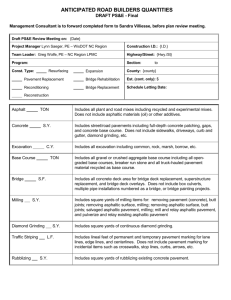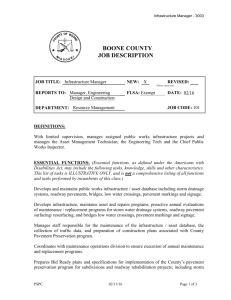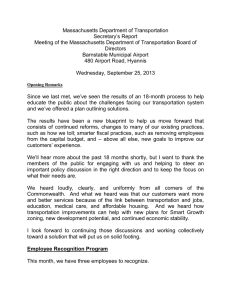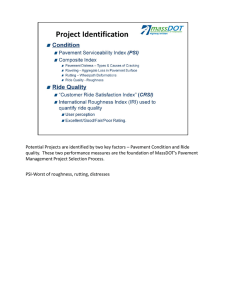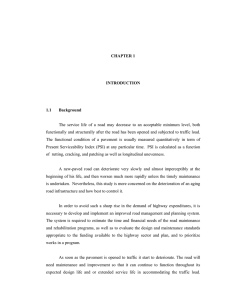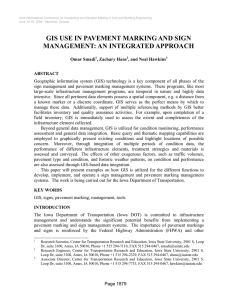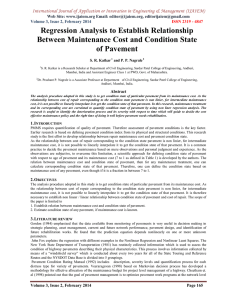Report of the Performance and Asset Management Advisory Council MassDOT-Highway Division
advertisement
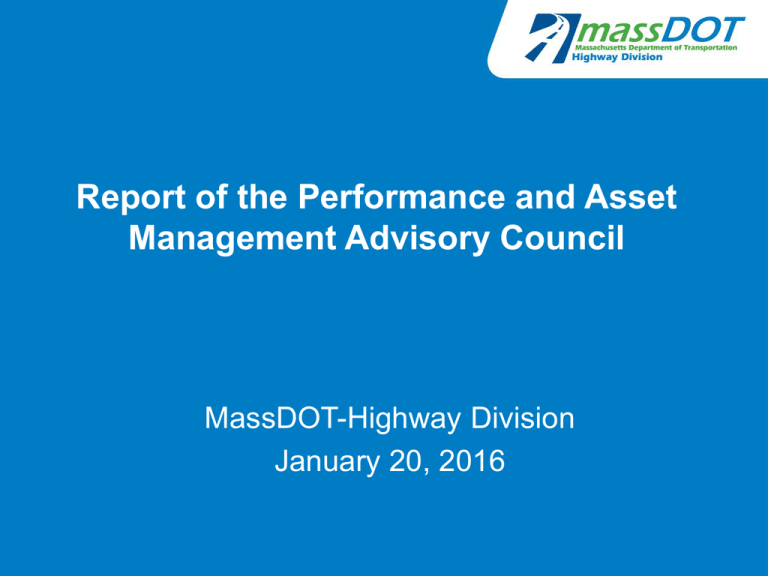
Report of the Performance and Asset Management Advisory Council MassDOT-Highway Division January 20, 2016 Purpose of the Report Asset Management Decision Making Process The report does: Establish asset inventory Assess current condition Model performance over time given investment levels Assist in developing investment portfolios Goals & Objectives Asset Inventory Condition Assessment & Performance Modeling Alternatives Evaluation & Program Optimization Short and Long Range Plans (Project Selection) The report does not: ₓ Establish performance goals ₓ Establish short term and long term investment plans Program Implementation Performance Monitoring 2 Budget / Allocations Contained in the Report Interstate and Non-interstate Pavement • Inventory, Condition, Value • Network Performance at Varying Investment Levels Bridge Assets • Inventory, Condition, Value • SD Trends based on Varying Investment Levels Other Assets • Tunnels, Ancillary Structures, Curb Ramps, Traffic Signs, Traffic Signals Next Steps 3 Pavement Highlights Highway Division is responsible for managing $22.5 billion in pavement assets Condition is assessed based on Pavement Serviceability Index (0-5) and translated to Poor/Fair/Good/Excellent scale. 4 Statewide, 81 percent of the MassDOT-owned, non-turnpike Interstate system in Massachusetts is considered to be in good or excellent condition. MassDOT Owned, Non-Turnpike, Interstate Pavement Condition (2014 Data) 100% 90% % Roadway Inventory 80% 70% 60% 50% 40% 30% 20% 10% 0% District 1 District 2 District 3 District 4 District 5 District 6 Poor Fair Good 5 Excellent Overall Interstate Pavement Network Performance Outcomes Given Varying Investment Levels (December 2015 Model, 2014 Pavement Data) 100 95 % Good or Excellent 90 85 80 75 70 65 60 55 50 2014 2015 2016 2017 2018 2019 2020 2021 2022 2023 Year 65 Million (Current) 52 Million 6 35 Million 2024 2025 Bridge Highlights Highway Division is responsible for managing $10.8 billion in bridge assets Condition is assessed based on NBIS Structural Evaluation Scale and categorized as SD or non-SD ABP program has been very successful in reducing our SD bridge count statewide, but report shows that continued investment is needed 7


